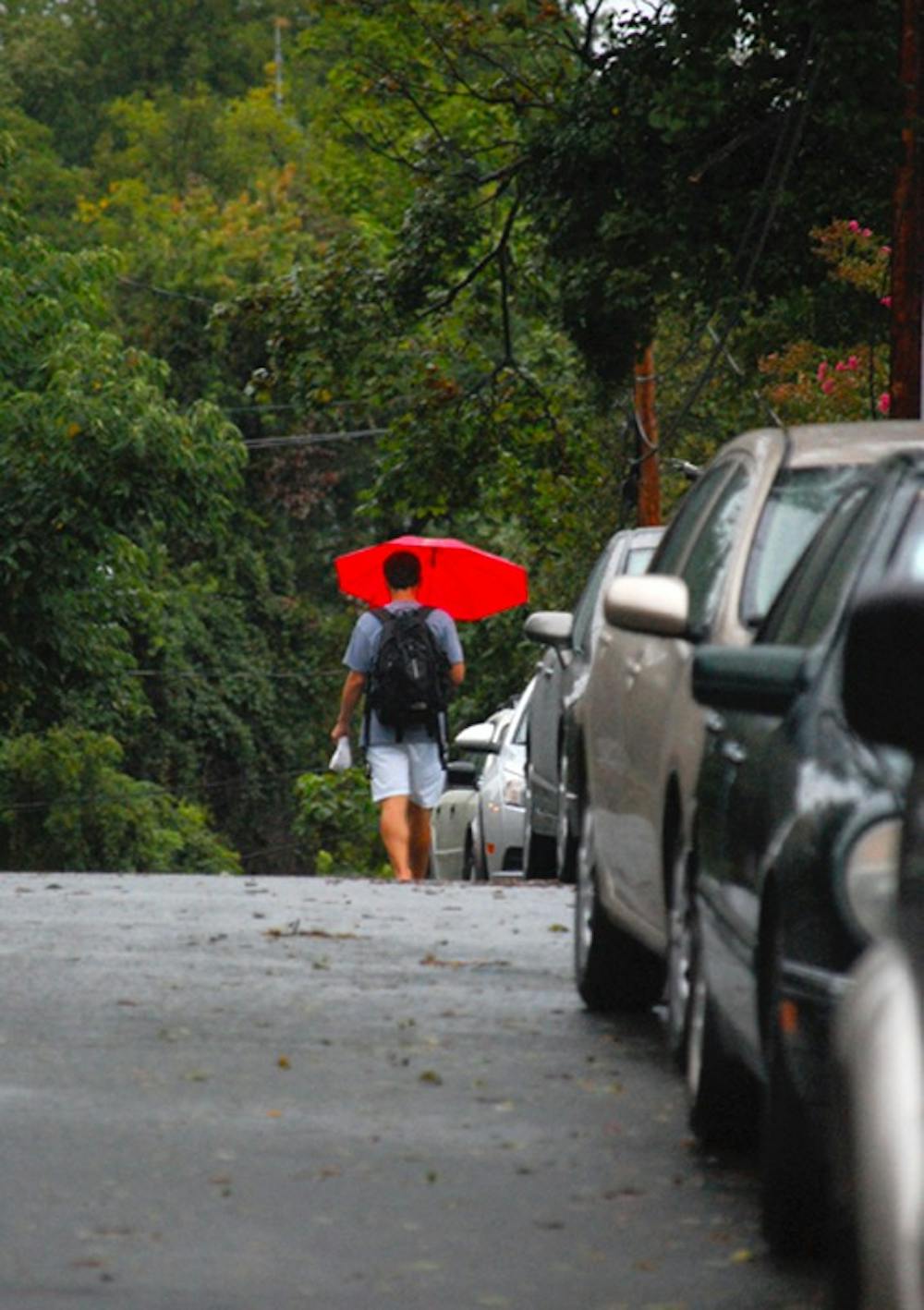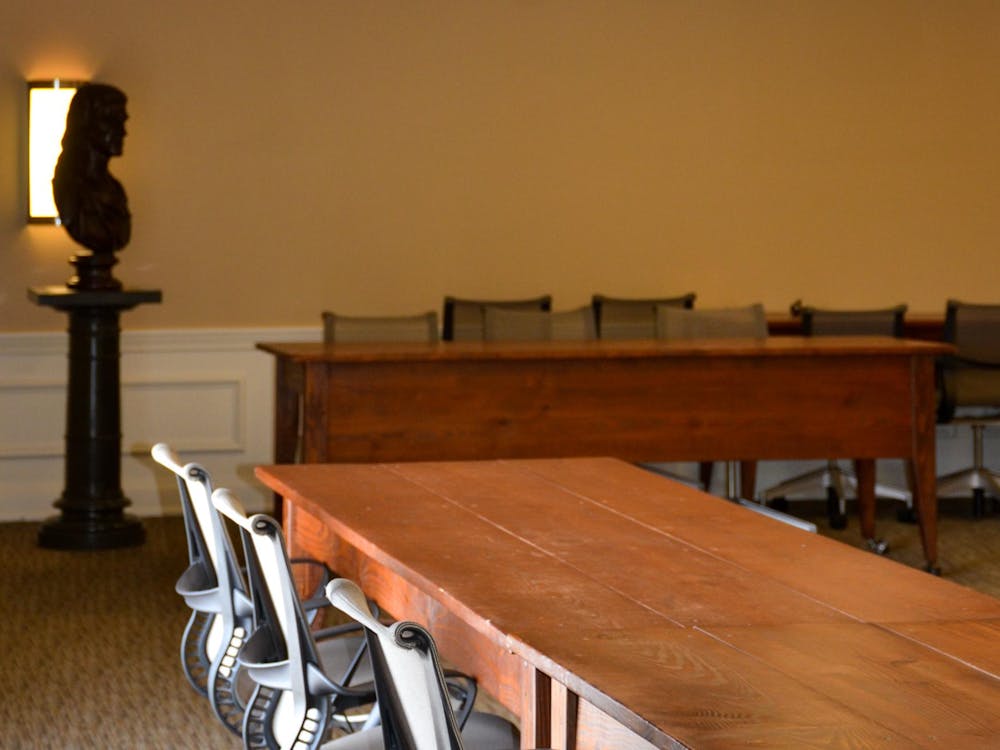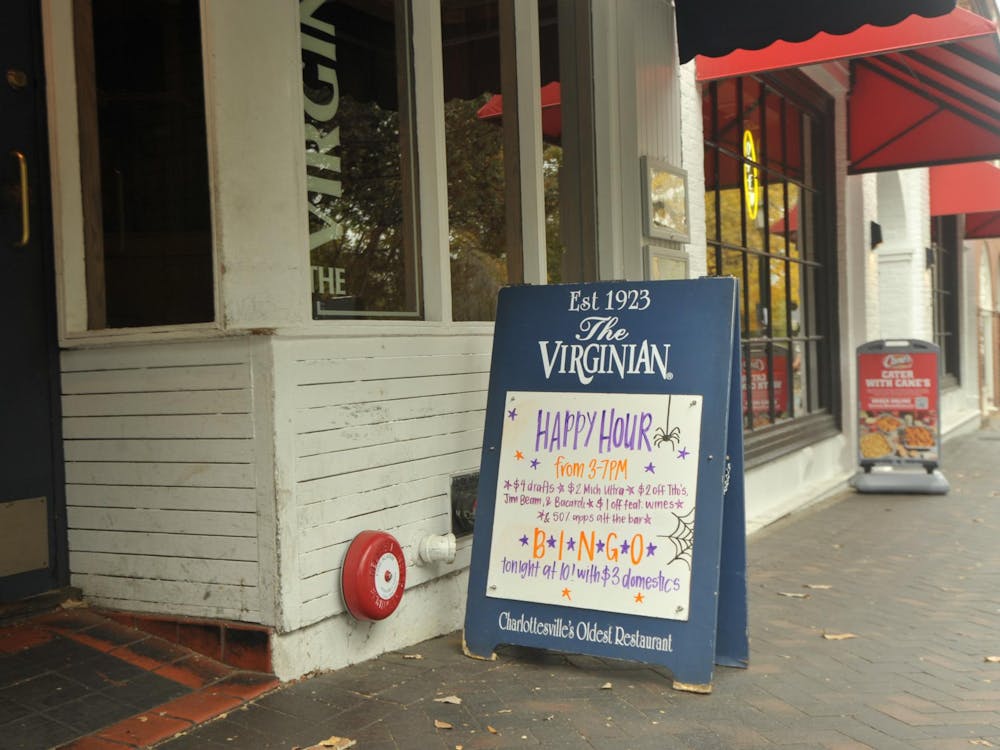Hurricane Irene grazed the Charlottesville area this past weekend, causing only minimal damage to the City as it made its way up the East Coast. Irene made landfall early Saturday morning, beginning its destructive path in North Carolina before continuing through Virginia and into New England. By Sunday afternoon, it was estimated that three million people lost power across the Eastern Seaboard - including 1,300 in the Charlottesville area - and that Irene was responsible for at least 18 deaths, four of which occurred in Virginia because of falling trees. By 9 a.m. Sunday, Irene had weakened from a Category 1 hurricane to a tropical storm, but flooding and power outages continued to be a problem as the storm struck New York City.
The much anticipated arrival of Irene in Charlottesville occurred early Saturday afternoon. The hurricane's presence was evident from the rain and gusty winds that lasted into the late evening. But despite the rain and strong winds, there were no reports of major damages or outages within the University community except for a tree leaning over the sidewalk by Cauthen Dormitory. Police roped off the area as they evaluated the situation. Ultimately, the damages to Charlottesville were negligible and the University continued to operate on a normal work schedule throughout the weekend.
In preparation for the hurricane's arrival, Gov. Bob McDonnell proclaimed a State of Emergency for Virginia. This declaration "allows state resources to be made available and decreases time needed to get personnel, equipment and supplies on scene if needed," McDonnell said in the statement Thursday. McDonnell also ordered a 3 p.m. closing of state offices in potential hurricane impact areas Friday afternoon. "I am sending non-essential state employees home to prepare for the hurricane and to relieve congestion to aid in local evacuations, and I challenge other employers in those affected areas to release non-essential employees to enable them to prepare for Hurricane Irene as well," he said.
The Charlottesville area also braced itself for Irene's impact. Charles Werner, chief of the Charlottesville Fire Department, prepared by ensuring that the department had enough food and supplies that might be needed, depending on the severity of Irene. "We have enough experience with hurricanes to know sort of what to expect," Werner said. "Typically if the storm directly impacts us, it's going to be flooding, trees down, trees in the wires, road closures, and power outages."
The University community also readied itself. Students received an email Thursday evening from Michael Strine, the University's executive vice president and chief operating officer, alerting them that Irene was expected to impact Virginia. The email also encouraged students to prepare for the hurricane by building a safety kit, securing outside objects, filling cars up with gas and being ready for power outages or the need to evacuate in the case of flooding.
Despite the University's email, many students did not view Irene as a serious threat. Second-year College student John Parsons was not worried about the hurricane because, "I looked at the red path of destruction, and it seems that Charlottesville is outside of the realm, so I think this will be the extent of it."
Second-year College student Marina Childers was not concerned for her safety, but was "just worried that the Internet or electricity is going to go out, and I won't be able to get my homework done."\nSome students received last minute visitors who were forced to evacuate and sought refuge from Irene. Rachel Williams, sister of fourth-year College student Jennie Williams, took a seven-hour train from New York City to Charlottesville Friday to escape the worst of the hurricane. "I feel much safer here than I did there," Rachel Williams said.







